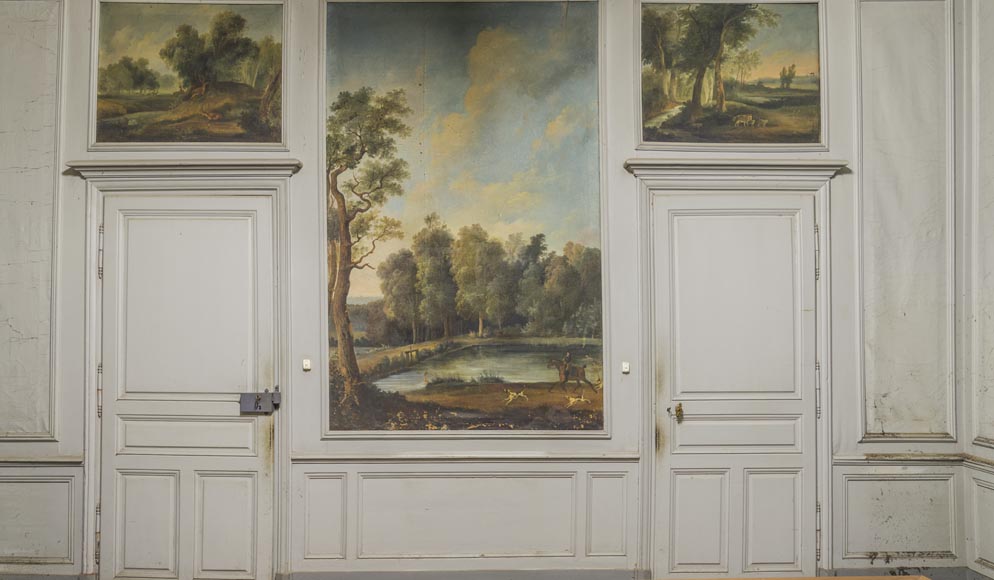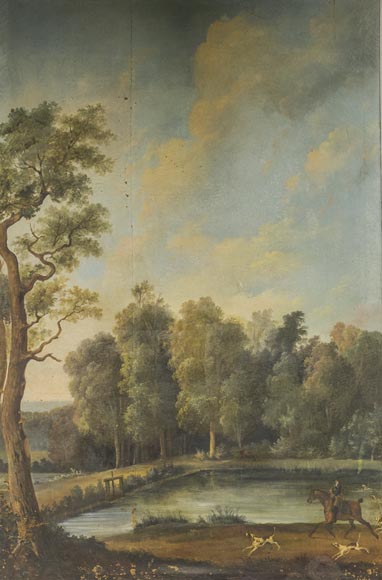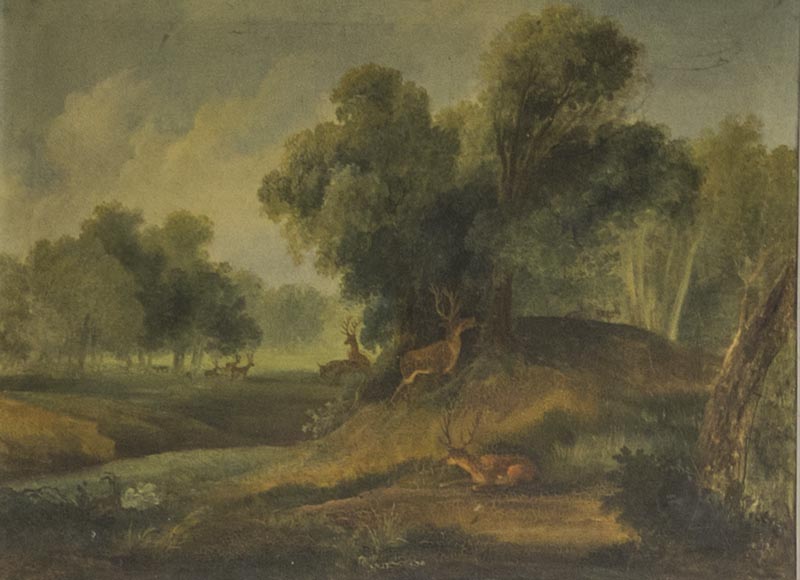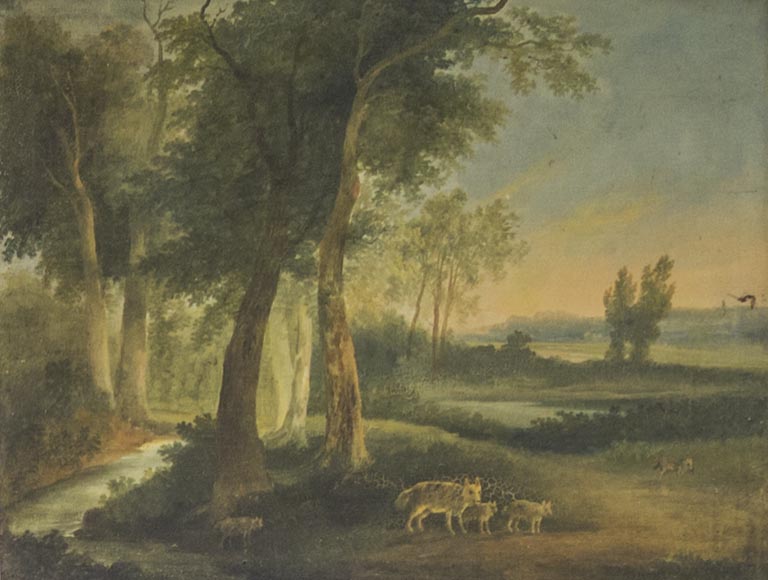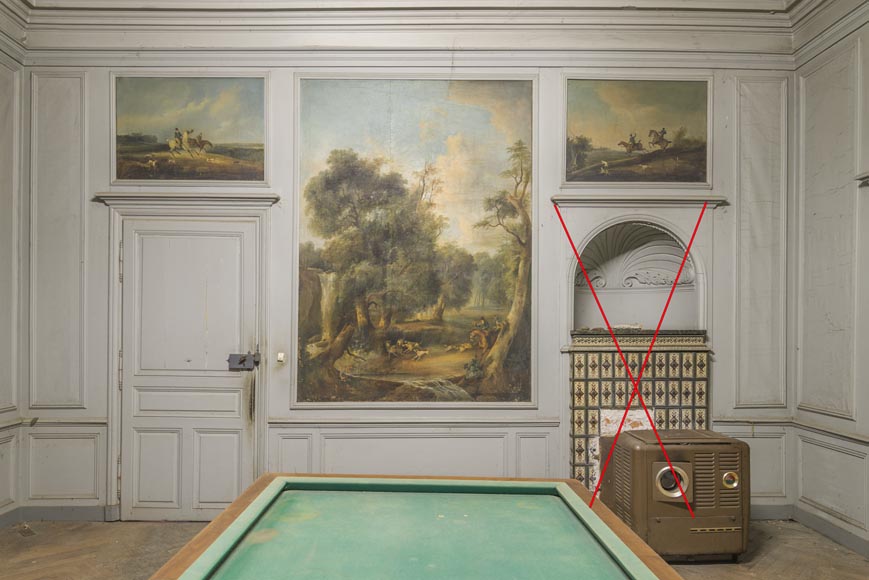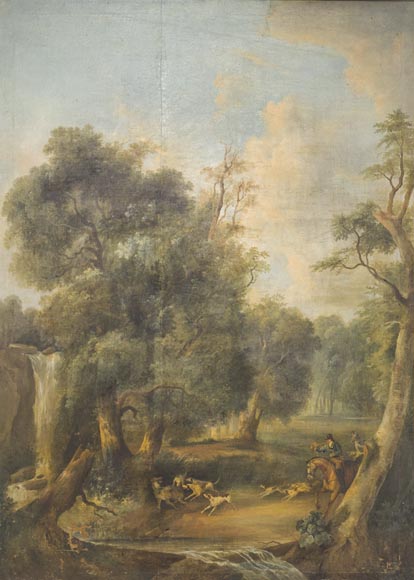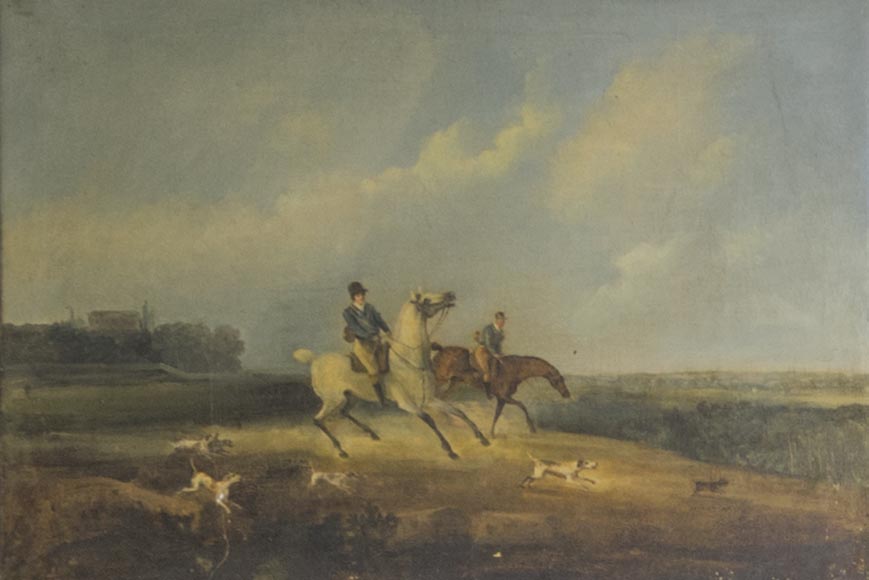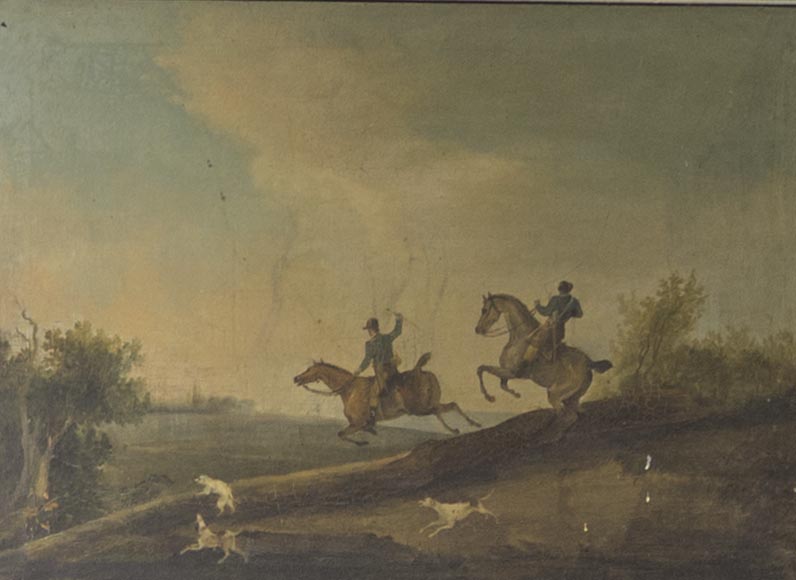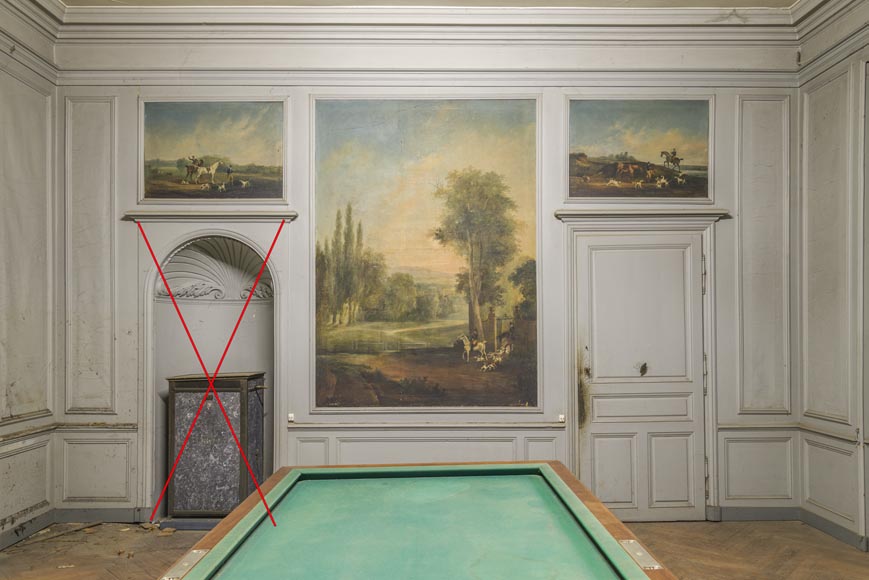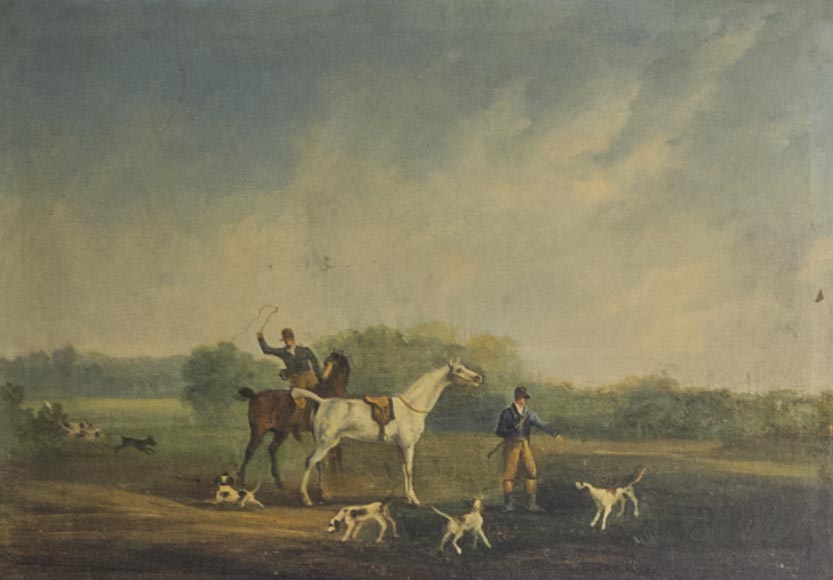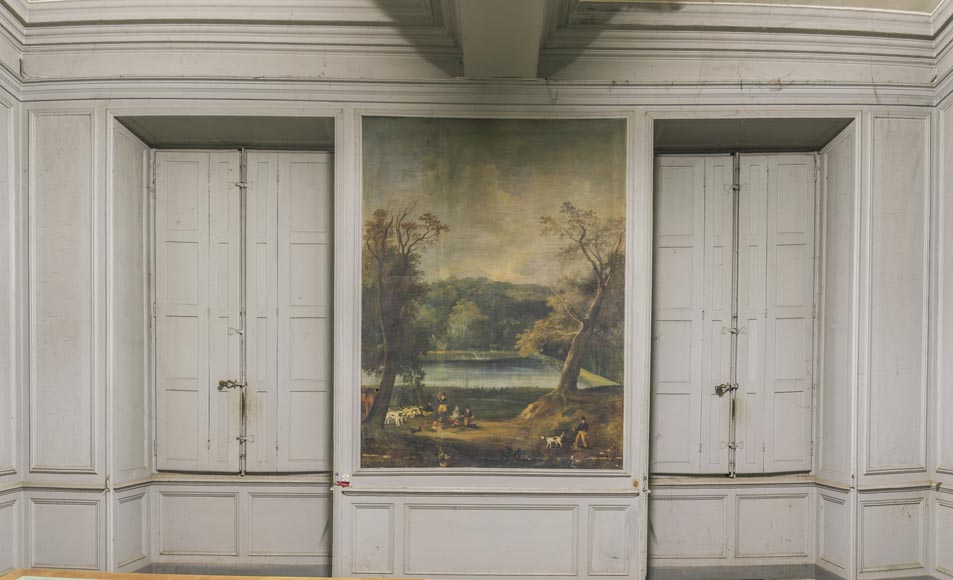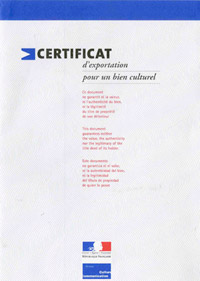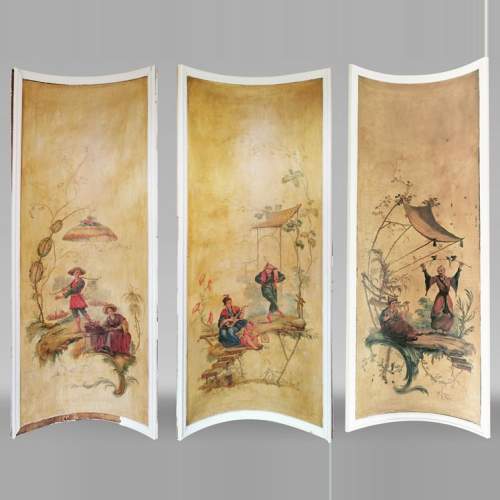Style Other / Ref.3712
Oak panelling painted with ten pictures of hunting scenes by A. Chaintieuil in a house in central France, 1827
Dimensions
Width 239'' ¾ 609cm
Height 139'' ¾ 355cm
Origin:
France, 1827
The square room is about 239.76 by 239.76 inch and about 139.76 inch high.
This panelling from the first half of the 19th century, in its original grey paintwork, features baseboards running the full length of the room. The four walls that make up the panelling are decorated with hunting-themed paintings in lush green colours that contrast with the grey of the wood panelling. The paintings are signed "A. Chaintieuil‘ and dated "1827".
On wall A, a rounded alcove on the left (not included in the panelling) and a door on the right, topped by their own transoms, frame a large central panel. The scenes depicted on this panelling indicate the start of a hunting party. The first horsemen and their pack emerge from the doorway of the large residence. A beautiful effect of depth allows the viewer to admire the landscape, which seems endless with greenery and calm. The two small panels in the transoms also show scenes just before the start of the hunt: the dogs have been let loose and the riders are already on their mounts or about to mount them.
Opposite wall A, wall B has its structure exactly reversed so that the two sides echo each other. In the central panel, the painter offers us a scene at the bend of a small stream. A horseman sounds his horn during a hunting party, while his canine crew rushes after the prey they have found. On either side of this scene, four riders face each other in a play of symmetry. All the dynamism and intensity of a hunting party are represented in the ardour of the dogs and horses, but also in the different attitudes of the hunters. In the painting on the left, we can make out a house; certainly that of the estate organising this hunt.
On side C, between the two walls described above, two doors frame the large central panel. The scenes painted here represent the middle of the hunting party (between the start on wall A and the capture of the prey on wall B). The large panel depicts a water source on the edge of the forest. In the foreground, one of the horsemen is galloping towards his prey, surrounded by four of his dogs. In the frame above the door on the left, we find a herd of magnificent stags in a peaceful setting, while the one on the right shows a she-wolf and her cubs on the banks of a stream. These two compositions give us an idea of the noble fauna that could be found in this lush forest.
Lastly, wall D is the only one with only one large painting, but the symmetry and framing are still maintained thanks to the shutters adorning the windows on either side of the central panel. This panel depicts the end of the hunting party. The day is drawing to a close, the hounds have been tied to a tree and the riders, tired but satisfied with their day, gather round a fire by the stretch of water already shown on the opposite wall (Wall C). Boots and horns sit nonchalantly by the fire.
In this panelling commissioned in 1827, both the cabinetmaker's and the painter's work show the importance given to the play of symmetry, colour contrasts and the alternation of peaceful, idle scenes in an ideal landscape with scenes that depict all the action and tension of hunting with hounds. The viewer will discover a fine chronological representation of the different stages of a hunting party on this magnificent estate.
Informations
Export certificate:
Available
Price: on request
Recommended for you :
Dimensions:
Width: 83
Height: 212
Dimensions:
Width: 115
Height: 82
Dimensions:
Width: 483
Height: 380
Depth: 650
Dimensions:
Width: 620
Height: 343
Depth: 620
Dimensions:
Width: 44
Height: 322
Depth: 12
Dimensions:
Width: 82
Height: 315
Depth: 5
Dimensions:
Width: 1100
Depth: 500
Dimensions:
Width: 460
Height: 535
Depth: 100
Dimensions:
Width: 695
Height: 311
Depth: 451
Dimensions:
Width: 65
Height: 186
Depth: 5
Dimensions:
Width: 1860
Height: 170
Depth: 11
Dimensions:
Width: 412
Height: 258



